What is Duct Heater Element
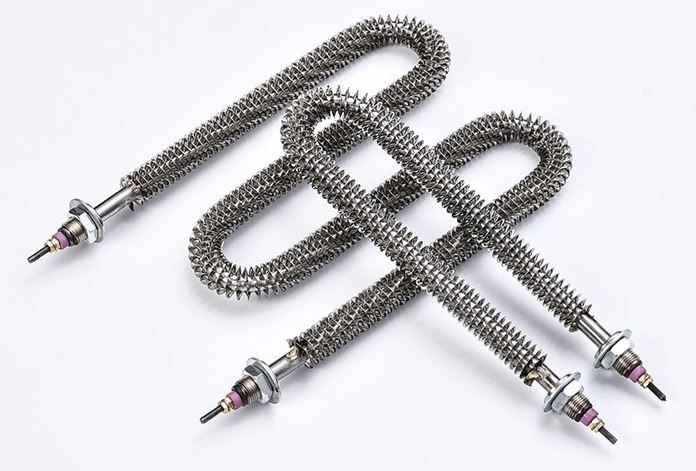
A duct heater element is a key part of many heating systems, especially in HVAC setups. It helps regulate air temperature as it passes through ductwork. This ensures consistent warmth in homes, offices, and industries. Understanding how it works can help you make better choices for efficient heating. How Does a Duct Heater Element Work? The duct heater element heats the air inside ventilation ducts. It uses electricity to create thermal energy, warming up the air that flows through. Electric Coils: These are the main components that generate heat. Temperature Sensors: They prevent overheating by regulating heat output. Safety Features: Some units include limit switches for added protection. Types of Duct Heater Elements Different systems require different designs. Here are some common types: Open Coil Heaters: These are highly efficient and used for larger airflow. Finned Tubular Heaters: Suitable for compact spaces and controlled heating. Custom-Built Elements: Designed for specialized industrial applications. Key Benefits of Duct Heater Elements Using a duct heater element offers many advantages: Consistent Air Temperature: Maintains a steady climate across all rooms. Energy Efficiency: Saves power by heating only when needed. Versatile Applications: Fits residential, commercial, and industrial needs. Safety First: Advanced models include overheating protection. Common Applications of Duct Heater Elements These elements are widely used in various environments: Residential Heating: Keeps homes warm during cold seasons. Commercial Spaces: Provides a comfortable environment for workers and customers. Industrial Use: Helps maintain controlled temperatures for sensitive equipment. Installation and Maintenance Proper installation ensures safety and efficiency. Here’s what you should know: Professional Installation: Always hire experts for safe wiring and setup. Regular Inspections: Check for wear and tear every few months. Cleaning Tips: Dust the coils and sensors to maintain performance. Factors to Consider When Choosing a Duct Heater Element Selecting the right element is crucial. Here are some points to think about: Power Rating: Ensure it matches your system’s requirements. Size and Design: Choose one that fits your duct dimensions. Safety Features: Look for options with thermal cutoffs. Material Quality: High-grade materials last longer and perform better. Troubleshooting Common Issues Sometimes, duct heater elements may face problems. Here are solutions for common issues: Airflow Obstruction: Clean the ducts to improve circulation. Overheating: Check if the thermostat or safety switches are faulty. Uneven Heating: Inspect the coil for damage or dirt buildup. Final Thoughts A duct heater element is vital for maintaining a comfortable indoor climate. Whether it’s your home or workplace, understanding its features and benefits can help optimize its use. Regular maintenance and smart installation ensure you get the most out of this essential heating component.
What is the Purpose of a Tube Heater?
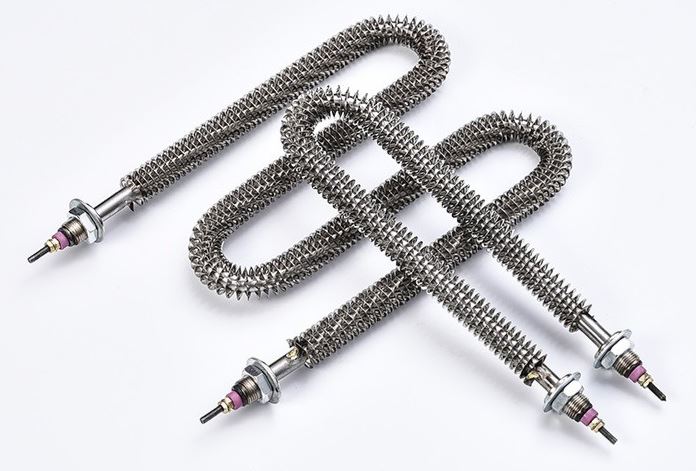
A Finned Tubular Heater is a vital component in various heating applications, designed to ensure efficient and uniform heat transfer. Its purpose lies in providing warmth, maintaining temperature consistency, and supporting various industrial processes. These heaters are known for their reliability and adaptability, making them a popular choice across multiple industries. Understanding how they work and their applications can help users make the most of this essential heating solution. What Is a Tube Heater? A tube heater is a heating element used to convert electrical energy into heat. It consists of a metal tube with internal components that generate and distribute heat efficiently. The heating mechanism is often made of durable materials like stainless steel, which ensures long-lasting performance. Tube heaters are used in residential, commercial, and industrial spaces due to their energy efficiency and versatility. Key Features of a Finned Tubular Heater Tube heaters are known for their robust construction and efficient operation. Here are some of their standout features: Durability: Built with high-quality materials to withstand extreme temperatures. Customizability: Available in different sizes, shapes, and power ratings to fit specific needs. Safety: Designed with protective features to prevent overheating. Energy Efficiency: Consumes less power while delivering optimal heat. Versatility: Suitable for heating air, liquids, and surfaces. How Does a Tube Heater Work? Tube heaters function by passing electricity through a resistance wire inside the tube. The resistance generates heat, which is transferred to the surrounding environment. The metal tube acts as a protective casing and helps distribute heat evenly. In the case of a Finned Tubular Heater, fins are added to increase the surface area, enhancing heat transfer efficiency. Purpose of a Tube Heater Tube heaters serve several critical purposes, including: Temperature Control: Maintaining desired temperatures in specific environments. Industrial Processes: Supporting applications like drying, melting, or curing materials. Comfort Heating: Keeping residential and commercial spaces warm during cold weather. Moisture Prevention: Preventing condensation in storage areas or machinery. Energy Conservation: Providing targeted heating without wasting resources. Applications of Tube Heaters Tube heaters are versatile and find use in various fields. Some common applications include: Residential Use Keeping basements and garages warm. Preventing pipes from freezing during winter. Industrial Use Drying and curing processes in manufacturing. Heating liquids in tanks or pipelines. Commercial Use Warming offices, workshops, or retail spaces. Maintaining specific temperatures in storage units. Benefits of Using Tube Heaters Tube heaters offer numerous benefits that make them a preferred choice. Here’s a quick look at their advantages: Types of Tube Heaters Tube heaters come in different types, each suited for specific tasks: Straight Tube Heaters: Best for general heating tasks. Finned Tubular Heaters: Ideal for applications needing enhanced heat transfer. Coiled Tube Heaters: Suitable for confined spaces. Immersion Heaters: Designed for heating liquids directly. Factors to Consider When Choosing a Tube Heater Selecting the right tube heater depends on several factors. Here’s what you should keep in mind: Purpose: Define the specific heating requirement. Power Rating: Ensure it matches your application’s energy needs. Material: Look for durable options like stainless steel. Size: Pick a heater that fits the available space. Safety Features: Choose models with built-in protection mechanisms. Why Are Tube Heaters Essential? Tube heaters play a vital role in improving comfort, enhancing efficiency, and supporting industrial operations. Their ability to provide consistent heating while saving energy makes them indispensable in various settings. Whether it’s preventing condensation or ensuring the proper functioning of machinery, tube heaters deliver reliable performance. Final Words The primary purpose of a tube heater is to deliver effective and efficient heating across different applications. From residential spaces to industrial processes, they ensure consistent temperatures and improved energy usage. Among the different types, Finned Tubular Heaters stand out for their enhanced performance and adaptability. By understanding their features, benefits, and applications, you can select the right tube heater for your needs and maximize its potential.
What is Portable Immersion Tubular Heater?
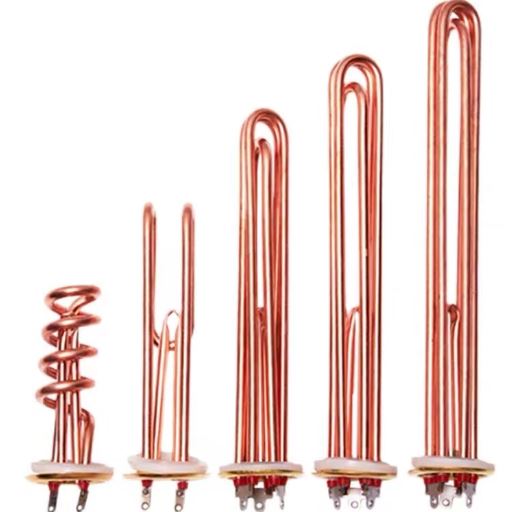
A Portable Immersion Tubular Heater is a highly efficient heating device designed to warm liquids quickly and effectively. This heater is compact, easy to use, and ideal for various applications. It works by immersing the tubular element directly into the liquid, ensuring even heat distribution and reducing energy waste. With its portable design, it is a practical choice for home, industrial, or outdoor use. Whether you need hot water for cleaning, cooking, or industrial processes, this heater gets the job done with precision. Let’s explore its features, benefits, and applications in detail. Features of a Portable Immersion Tubular Heater Compact Design: Easy to carry and store. High Efficiency: Quickly heats liquids while conserving energy. Durable Materials: Made from high-quality, corrosion-resistant materials. Versatility: Suitable for water, oils, and other liquids. Safety Features: Includes overheating protection and insulated handles. These features make it a reliable tool for a variety of heating needs. How Does a Portable Immersion Tubular Heater Work? The heater consists of a tubular element that generates heat when powered. Here’s how it works: Immersion: Place the heater directly into the liquid. Heating Process: The tubular element heats up and transfers heat to the liquid. Temperature Control: Some models offer adjustable temperature settings for precise control. Safety Measures: Advanced designs include automatic shut-off to prevent overheating. This straightforward process ensures quick and uniform heating. Benefits of Using a Portable Immersion Tubular Heater Time-Saving: Heats liquids much faster than traditional methods. Energy Efficiency: Reduces energy consumption by directly transferring heat to the liquid. Portability: Can be used anywhere with an electrical outlet. Cost-Effective: Affordable initial cost and low operating expenses. Ease of Use: Simple setup and operation. These advantages make it a preferred choice for many users. Common Applications Portable immersion tubular heaters are versatile and serve multiple purposes: Household: Heating water for cleaning, bathing, or cooking. Industrial: Ideal for chemical processing, oil heating, and laboratory use. Outdoor Activities: Useful for camping, caravanning, or emergency situations. Agriculture: Heating water for livestock or cleaning equipment. Their adaptability makes them suitable for diverse environments. Comparison Table: Portable Immersion Tubular Heater vs Traditional Heaters This table highlights why portable immersion tubular heaters are often a better choice. Safety Tips for Using a Portable Immersion Tubular Heater Always read the user manual before operating. Ensure the heater is fully submerged before turning it on. Avoid touching the heating element during and after use. Use only in appropriate liquids; avoid flammable or corrosive substances. Unplug the heater before removing it from the liquid. Following these tips ensures safe and effective use. Factors to Consider When Buying When choosing a portable immersion tubular heater, keep these factors in mind: Wattage: Higher wattage means faster heating but higher power consumption. Material: Stainless steel or titanium offers durability and corrosion resistance. Size: Choose based on the volume of liquid you need to heat. Safety Features: Look for overheating protection and insulated handles. Price: Compare prices to find the best value for your budget. Selecting the right model ensures long-term satisfaction and efficiency. Last Word A Portable Immersion Tubular Heater is a reliable and efficient tool for heating liquids. Its compact design, energy efficiency, and versatility make it suitable for household, industrial, and outdoor applications. By understanding its features, benefits, and proper usage, you can maximize its potential and enjoy its convenience. Contact Cheri Heater and invest in this practical device and simplify your liquid heating needs today!
What is Tubular Heater Screwfix?
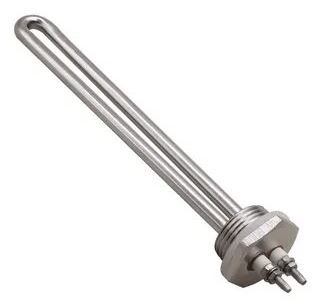
Tubular heaters are a reliable and efficient solution for keeping spaces warm in cold weather. If you’re exploring heating solutions, you might come across the term tubular heater suppliers and wonder what it means when paired with Screwfix. This article will explain everything you need to know about tubular heaters, their uses, and why they are a preferred choice for many people. Understanding Tubular Heaters A tubular heater is a compact heating device designed for areas that need consistent, low-level heat. These heaters are often made of durable metal tubing, ensuring they withstand extended use. They’re perfect for spaces like garages, workshops, greenhouses, or storage rooms where maintaining warmth is important to protect equipment, plants, or items sensitive to cold. Key Features of Tubular Heaters: Energy-Efficient: They consume less power compared to larger heaters, making them a cost-effective option. Compact Design: These heaters are small and fit neatly in tight spaces. Safety-Oriented: Equipped with thermal cut-out mechanisms to prevent overheating. Versatile: Suitable for both residential and commercial applications. Corrosion-Resistant: Often designed with materials that can handle damp or humid conditions. Screwfix and Tubular Heaters Screwfix is a well-known retailer that provides a wide range of tools, fixtures, and equipment, including tubular heaters. They cater to both professionals and homeowners looking for efficient heating solutions. When you shop for tubular heaters at Screwfix, you’ll find a variety of models tailored to different needs. Applications of Tubular Heaters Tubular heaters are not just for one purpose. They have several practical applications: Greenhouses: Keeps plants at an optimal temperature during winter. Garages and Workshops: Provides comfortable warmth while working in cold environments. Storage Rooms: Protects items sensitive to freezing temperatures. Bathrooms: Prevents dampness and keeps the area warm. Animal Shelters: Offers warmth to pets or livestock during cold seasons. Why Choose Tubular Heaters? There are multiple reasons why tubular heaters are a great choice for heating needs. They provide consistent heat without wasting energy. Below are some detailed benefits: How to Choose the Right Tubular Heater? When selecting a tubular heater, consider these factors: Length and Size: Measure the space you want to heat and pick the appropriate heater size. Wattage: Higher wattage models provide more heat but consume more energy. Safety Features: Look for heaters with automatic cut-off mechanisms. Environment: Choose corrosion-resistant models for humid or damp areas. Price and Warranty: Compare prices and check the warranty offered by the manufacturer or supplier. Safety Tips for Using Tubular Heaters Tubular heaters are generally safe, but it’s always wise to follow these precautions: Avoid covering the heater: Never place items directly on or over the heater to prevent overheating. Keep away from flammable materials: Maintain a safe distance from curtains, paper, or wood. Use the correct wattage: Overloading a heater can cause it to malfunction. Inspect regularly: Check for any signs of wear or damage, and replace the unit if necessary. Maintenance of Tubular Heaters Keeping your heater in good condition ensures it lasts longer and operates efficiently. Clean regularly: Wipe down the heater to remove dust and debris. Check wiring: Ensure the electrical connections are secure and undamaged. Test safety features: Verify that the thermal cut-out mechanism is functioning. Last Word Tubular heaters are a practical solution for those looking to maintain warmth in specific spaces without high energy costs. Screwfix offers a wide selection of these heaters, making it easier for customers to find the right product for their needs. When exploring heating options, always look for trusted tubular heater suppliers to ensure quality and reliability. FAQs Can tubular heaters be left on overnight? Yes, most tubular heaters are designed for continuous use, but always follow the manufacturer’s guidelines. Are they expensive to run? No, tubular heaters are energy-efficient and cost less to operate compared to larger heating systems. Do they require professional installation? Not necessarily. Most models come with easy-to-follow instructions for DIY installation.
What are Tubular Heaters Used For?
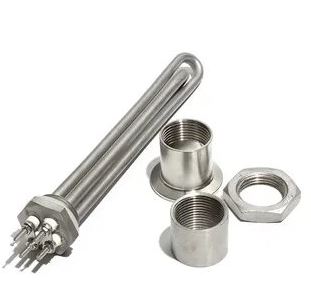
Tubular heaters are versatile heating devices used across various industries and applications. A trusted tubular heater manufacturer designs these heaters to provide efficient and controlled heat transfer. They are reliable, energy-efficient, and adaptable for different settings, making them a popular choice for many industries. Let’s explore what tubular heaters are and how they are used in everyday applications. Understanding Tubular Heaters Tubular heaters are electrical heating elements made from metal tubes. Inside the tube, a high-resistance wire generates heat when powered by electricity. The design ensures durability, even in harsh environments. These heaters are available in different sizes, shapes, and configurations to meet specific needs. They can be straight, coiled, or formed into custom shapes. Key Features of Tubular Heaters Durable Design: Made with high-quality materials for long-lasting performance. Versatility: Suitable for heating liquids, gases, and solid surfaces. Energy Efficiency: Provides effective heating with minimal energy waste. Customizable: Can be tailored for specific temperature ranges and applications. Corrosion Resistance: Withstands challenging environments like moisture or chemicals. Applications of Tubular Heaters Tubular heaters are widely used due to their adaptability. Below are some common applications: 1. Industrial Heating Industries use tubular heaters for heating processes in factories and workshops. These heaters help with drying, melting, and curing materials. Heating tanks for liquids. Preheating molds and dies. Industrial ovens for baking and drying. 2. HVAC Systems Tubular heaters play a vital role in heating and ventilation systems. They are used in: Duct heating to maintain warm airflow. Air curtains to reduce heat loss. Space heaters for localized temperature control. 3. Food Processing In food manufacturing, tubular heaters are essential for maintaining consistent temperatures during processing. Examples include: Baking equipment. Fryers for heating oil. Warming plates and food storage units. 4. Water and Liquid Heating Tubular heaters are ideal for heating water and other liquids. They are commonly used in: Boilers and water heaters. Chemical processing tanks. Oil heaters for industrial use. 5. Medical Equipment The medical field uses tubular heaters for sterilization and other heating requirements. Some examples are: Sterilizers to kill bacteria. Incubators to maintain controlled environments. 6. Appliances Home appliances also depend on tubular heaters for efficiency. Common examples include: Dishwashers to heat water. Ovens for cooking. Electric kettles and coffee machines. Choosing the Right Tubular Heater To choose the best tubular heater for your needs, consider the following: Material: Choose corrosion-resistant materials like stainless steel for durability. Watt Density: Match the power output to the application for efficient heating. Size and Shape: Ensure the heater fits your equipment perfectly. Temperature Control: Opt for heaters with adjustable settings for better control. Maintenance Tips for Tubular Heaters Regular Cleaning: Remove dust and debris to maintain efficiency. Check for Damage: Inspect for wear or corrosion regularly. Avoid Overloading: Use within the recommended voltage and wattage limits. Replace When Necessary: If performance decreases, replace the heater promptly. Final Words Tubular heaters are essential in various industries, from food processing to medical equipment. They offer reliable and efficient heating solutions for liquids, gases, and solid surfaces. Whether used in industrial settings or home appliances, their durability and adaptability make them a smart choice. By selecting a heater from a trusted tubular heater manufacturer, you ensure high performance and long-lasting reliability.
What are Heat Resistant Cables and Wires?
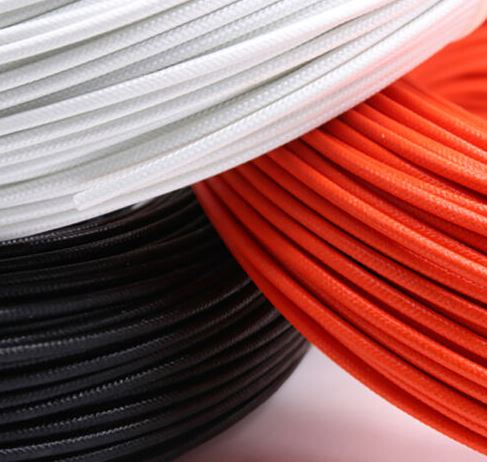
Heat resistant cables and wires are specialized electrical conductors designed to maintain their integrity and performance under high temperatures. These essential components play a crucial role in many industries, from manufacturing to power generation, where standard wiring would fail. Many tubular heater manufacturers rely on these specialized cables to ensure their heating products operate safely and effectively. Understanding Heat Resistant Cable Construction Heat resistant cables consist of multiple layers, each serving a specific protective function. At the core, you’ll find copper or aluminum conductors, surrounded by special insulation materials like silicone rubber, PTFE (Teflon), or fiberglass. The outer jacket typically uses compounds that can withstand extreme temperatures while protecting against mechanical damage. Key Benefits of Heat Resistant Cables and Wires Heat resistant cables offer several important advantages: Extended Lifespan: These cables last much longer in high-temperature environments compared to standard wiring Safety Enhancement: They reduce fire risks in hot areas by maintaining their insulation integrity Consistent Performance: The cables keep working reliably even when exposed to sustained heat Chemical Resistance: Many heat resistant cables also resist oils, acids, and other harsh substances Applications Across Industries Heat resistant cables find essential uses in many fields: Manufacturing These cables power equipment in metal processing, where ambient temperatures often exceed 150°C. They connect heating elements, sensors, and control systems in furnaces and kilns. Automotive Car manufacturers use heat resistant wiring near engines and exhaust systems. These cables must withstand both high temperatures and vibration. Energy Sector Power plants require heat resistant cables for turbine monitoring and control systems. Solar power installations also need these cables to handle intense sun exposure. Choosing the Right Heat Resistant Cable Consider these factors when selecting heat resistant cables: Maximum Temperature Exposure Duration of Heat Exposure Environmental Conditions Mechanical Stress Requirements Chemical Exposure Risks Installation and Maintenance Proper installation helps ensure optimal performance: Always follow manufacturer guidelines for bending radius Use appropriate termination methods rated for high temperatures Check cable markings to confirm temperature ratings Install strain relief to prevent mechanical damage Regular inspections help catch early signs of wear Future Developments Research continues to improve heat resistant cable technology. New materials promise even higher temperature ratings and better durability. These advances will help support emerging industries and applications requiring extreme temperature resistance. Safety Standards and Certification Heat resistant cables must meet strict safety standards: UL Standards for North America IEC Standards for International Markets EN Standards for European Union ISO Quality Management Requirements Cost Considerations While heat resistant cables cost more than standard wiring, they offer long-term value through: Reduced replacement frequency Lower maintenance needs Better system reliability Decreased fire risk Extended equipment life Environmental Impact Modern heat resistant cables often incorporate eco-friendly materials and manufacturing processes. Manufacturers focus on: Reducing harmful substances Using recyclable materials Improving energy efficiency Extending product lifespan Minimizing waste Final Words Heat resistant cables and wires represent a critical advancement in electrical engineering that enables safe operations in high-temperature environments. These specialized components continue to evolve, meeting the growing demands of modern industry while adhering to strict safety standards. As technology advances and new industrial challenges emerge, heat resistant cables will remain an essential part of our electrical infrastructure, protecting equipment and people alike.
What is High Temperature Wire For Oven

High-temperature wire for ovens is a special type of cable designed to handle extreme heat safely. These wires are essential in ensuring that ovens, whether used in homes or industrial kitchens, function safely and effectively. Made from materials that resist heat, these cables maintain electrical conductivity even in high-temperature environments. If you’re looking to upgrade or replace your oven wiring, understanding the specifics of temperature cable for oven is key to making the right choice. What Makes High-Temperature Wires Different? High-temperature wires stand apart due to their durability and thermal resistance. Ordinary cables can melt or fail when exposed to intense heat, but these wires are engineered to withstand the following: Heat Resistance: They can handle temperatures ranging from 150°C to over 1200°C, depending on the material used. Durable Insulation: The insulation is made from materials like silicone, fiberglass, or Teflon, ensuring the wires remain protected. Fire Resistance: Many high-temperature wires are flame-retardant, reducing the risk of fires. Materials Used in High-Temperature Wires The material composition plays a critical role in a wire’s performance. Here’s a table highlighting the commonly used materials and their benefits: These materials ensure safety, efficiency, and longevity in high-temperature environments. Why Are High-Temperature Wires Essential for Ovens? Ovens operate at very high temperatures, often exceeding 200°C. Regular wires can’t handle this heat and may cause malfunctions or even fires. High-temperature wires are critical for the following reasons: Ensures Safety: Prevents electrical hazards in heat-intensive environments. Improves Durability: Increases the lifespan of oven components. Enhances Performance: Maintains consistent electrical flow even under extreme heat. How to Choose the Right High-Temperature Wire Selecting the right wire depends on the oven type, environment, and required temperature range. Consider these factors: Temperature Range: Check the maximum operating temperature of your oven. Choose a wire rated higher than this. Wire Insulation: Silicone is suitable for moderate heat, while fiberglass or ceramic is ideal for industrial ovens. Voltage Rating: Ensure the wire supports the voltage required by your oven. Flexibility: For tight spaces, opt for wires with flexible insulation like silicone. Standards and Certification: Look for wires meeting UL, CE, or other safety standards. Installation Tips for High-Temperature Wires Proper installation ensures the wire performs effectively. Follow these tips: Cut to Length: Measure the required length before cutting to avoid waste. Secure Connections: Use heat-resistant terminals and connectors for secure and safe connections. Avoid Sharp Bends: Minimize bending to prevent damage to the insulation. Regular Inspection: Periodically check for wear, fraying, or cracks in the insulation. Common Applications of High-Temperature Wires Apart from ovens, these wires are used in a variety of heat-intensive applications: Industrial furnaces Kilns and heaters Automotive exhaust systems Aerospace equipment Their versatility makes them indispensable in both residential and industrial settings. Wrap Up High-temperature wires are a vital component of any oven, ensuring safety and efficiency in extreme conditions. By understanding the materials, applications, and installation methods, you can select the best temperature cable for oven for your needs. Investing in high-quality wires not only enhances oven performance but also ensures long-term reliability. Whether you’re upgrading your kitchen or working on industrial projects, these wires are a must-have for any heat-related application.










